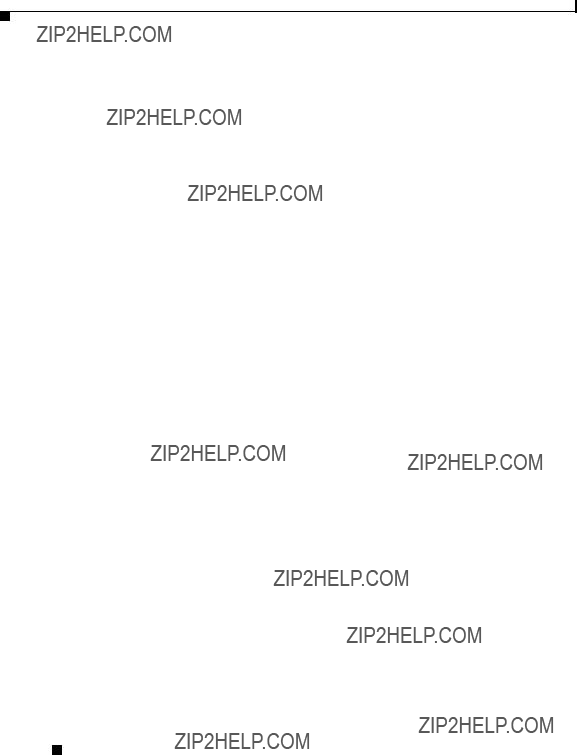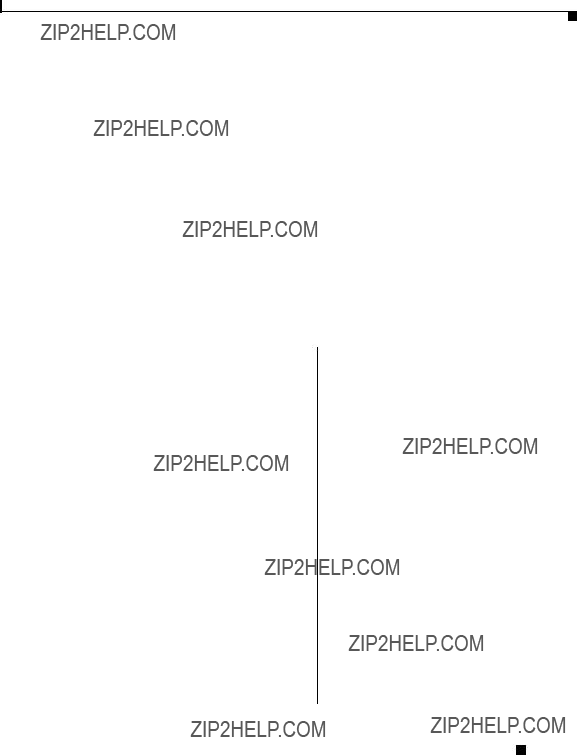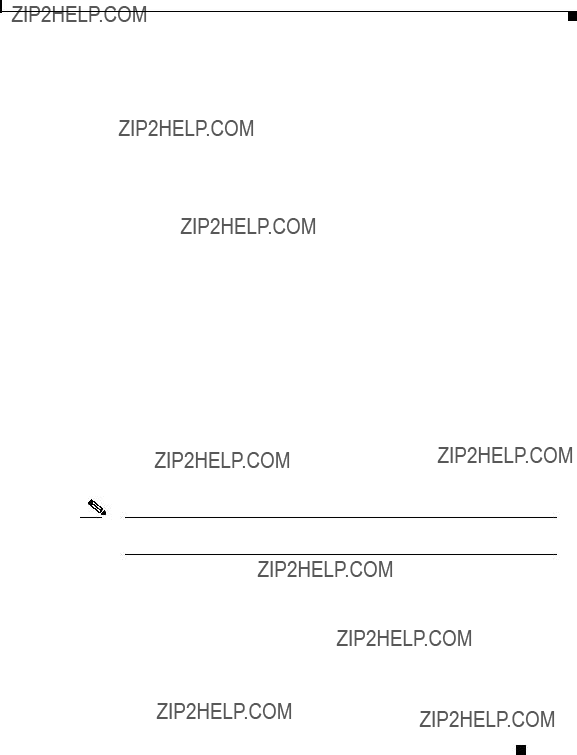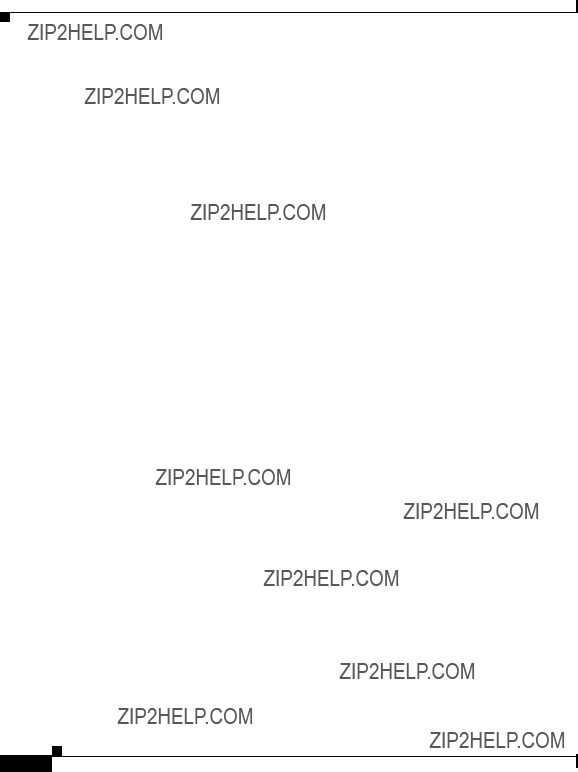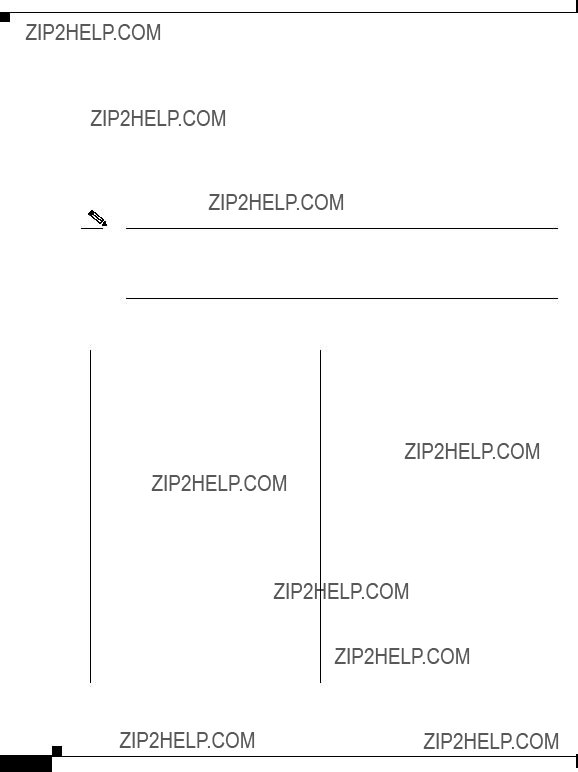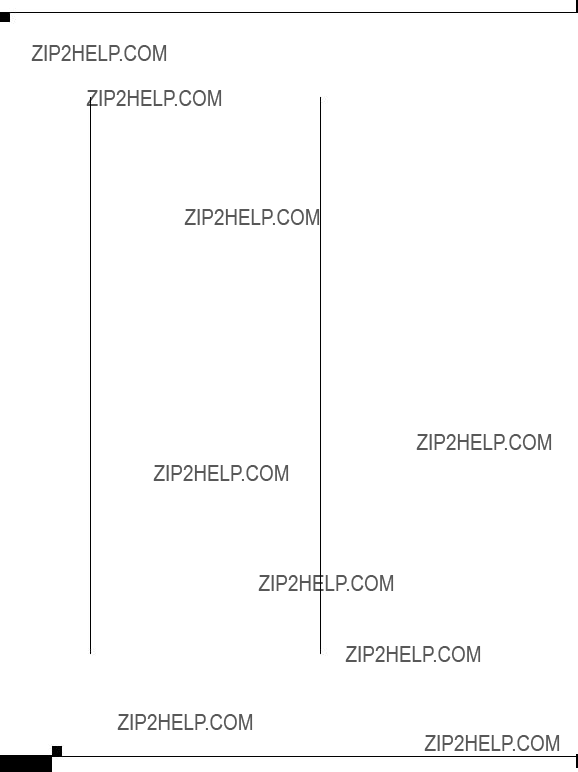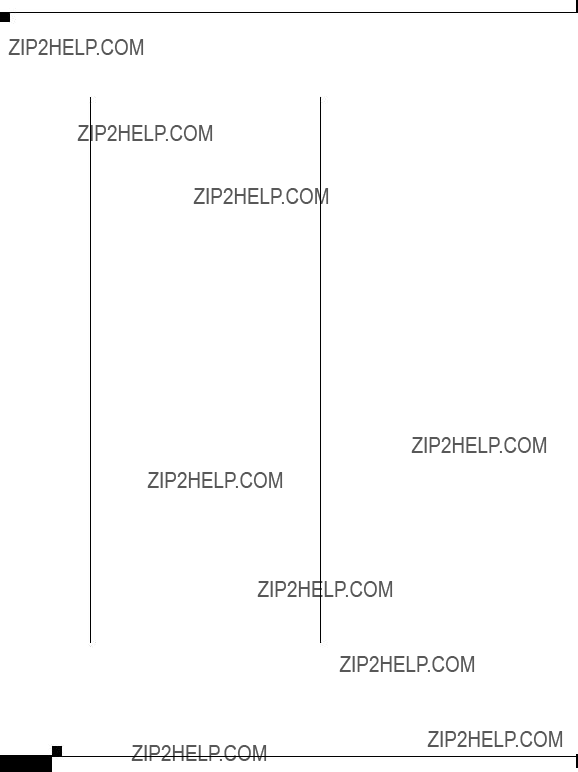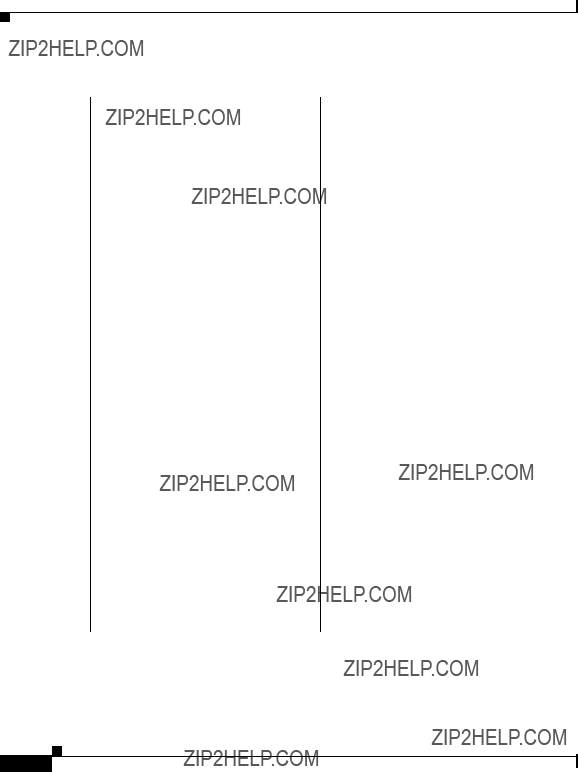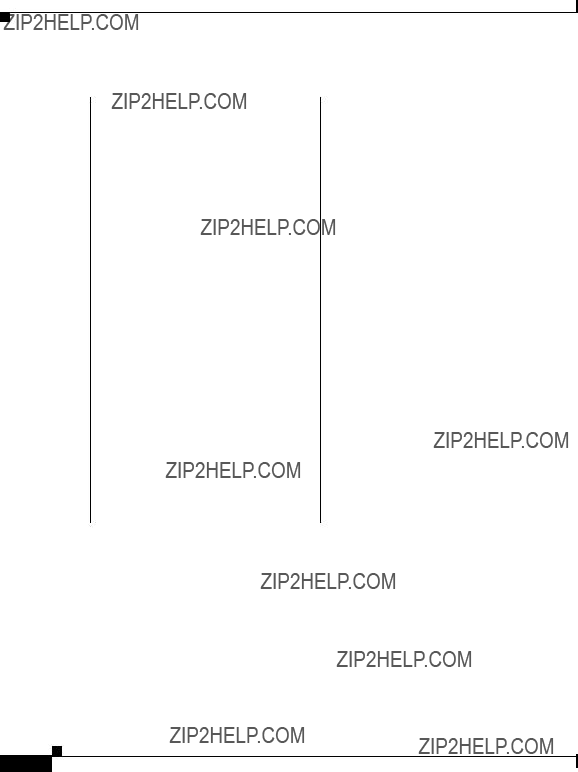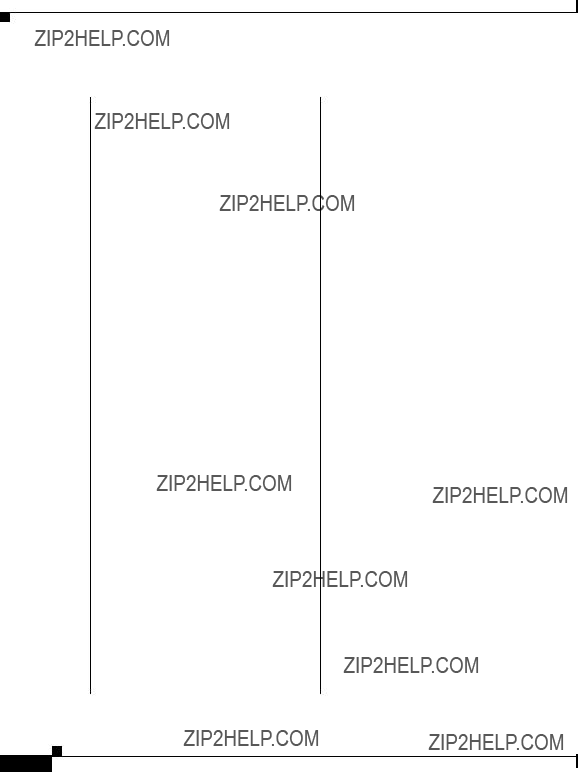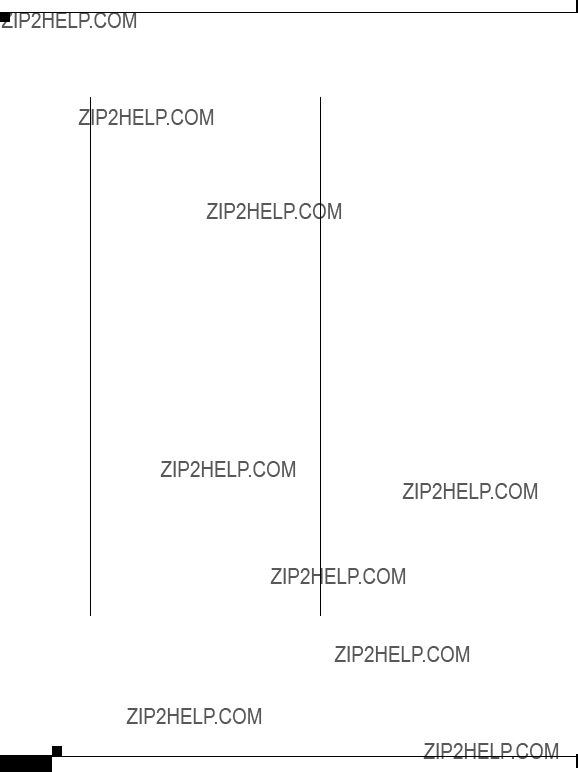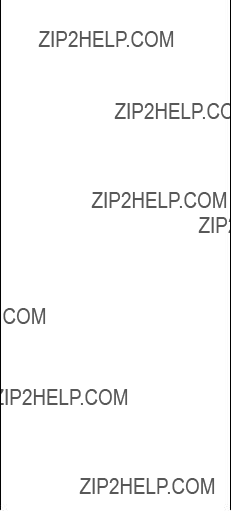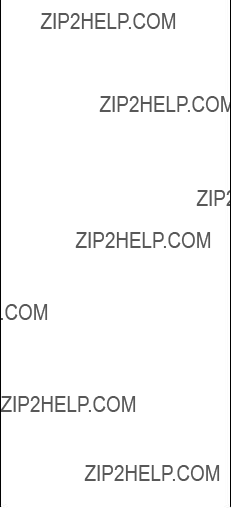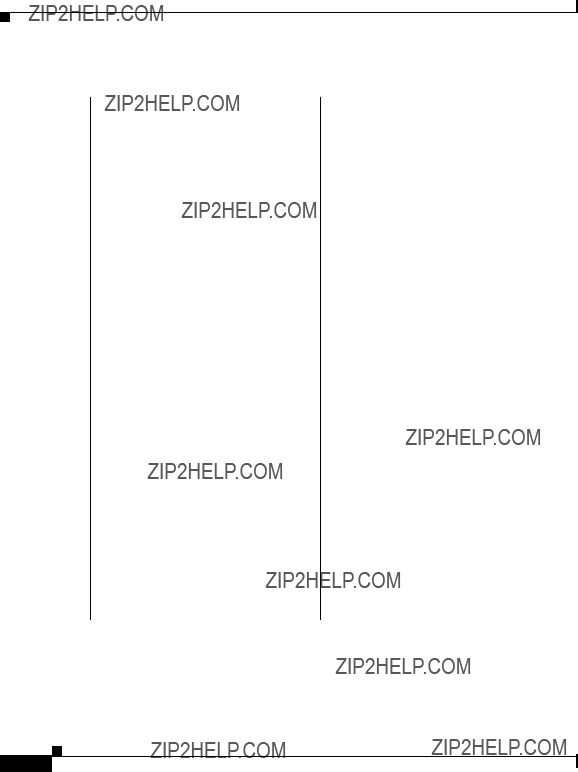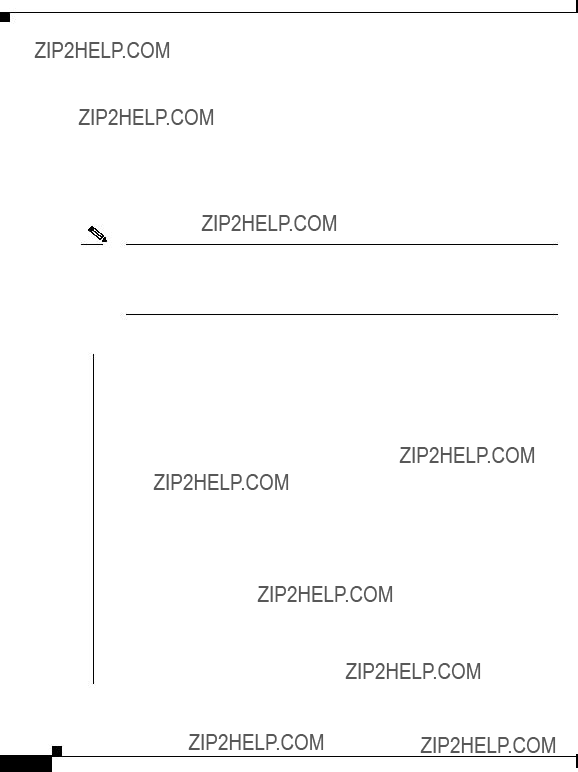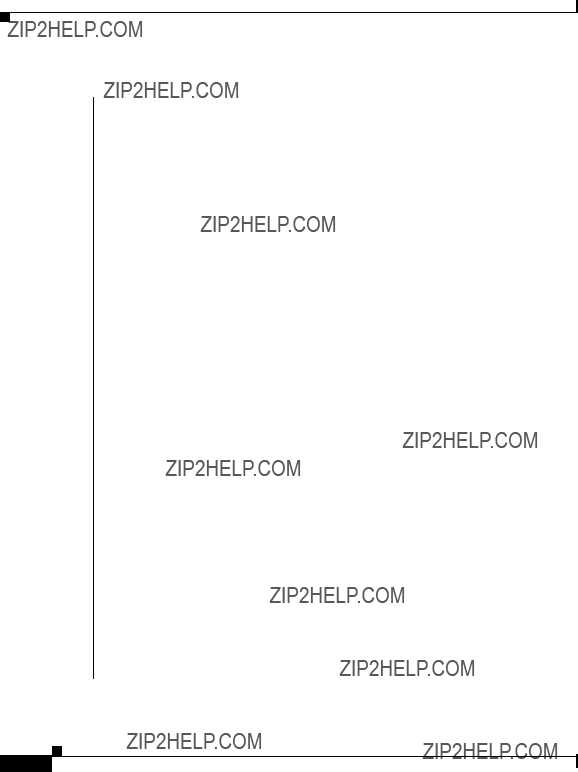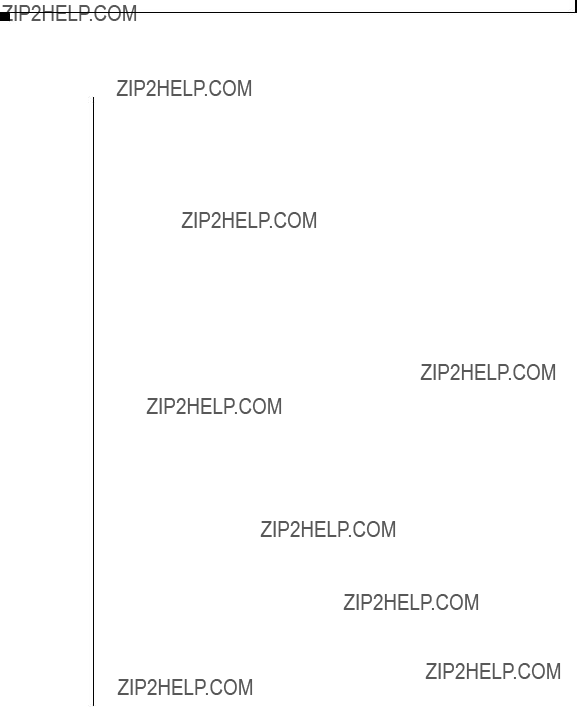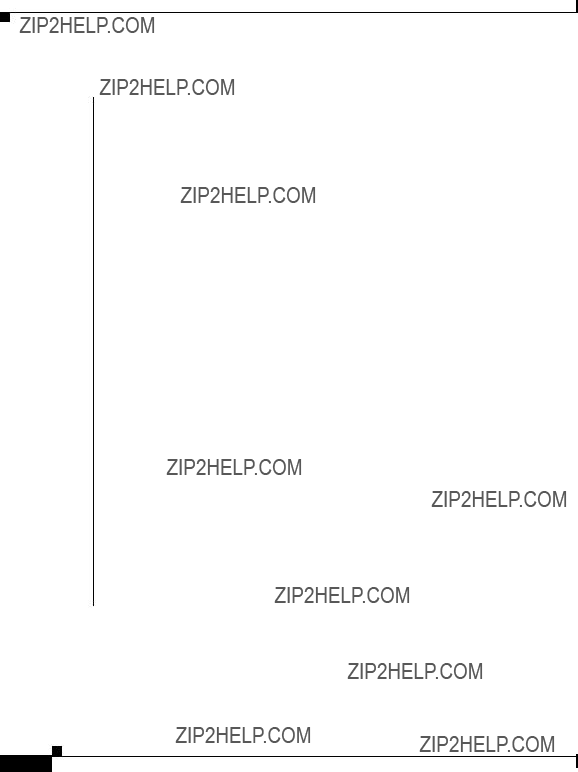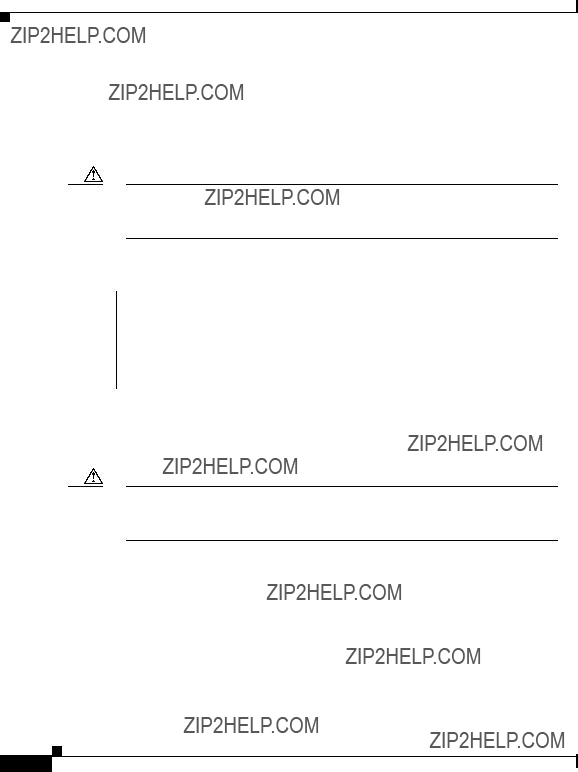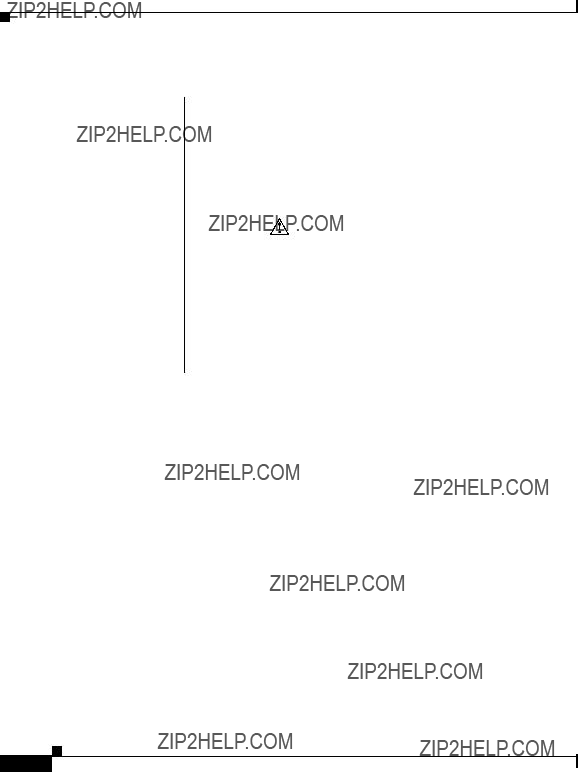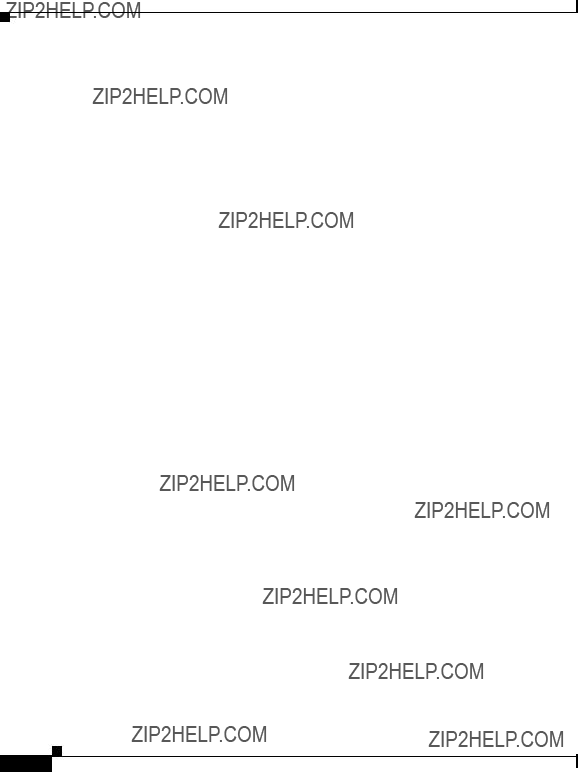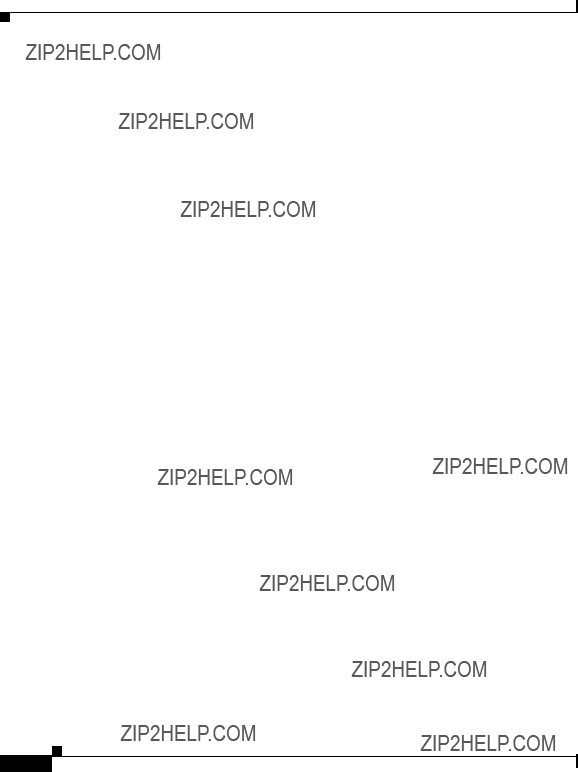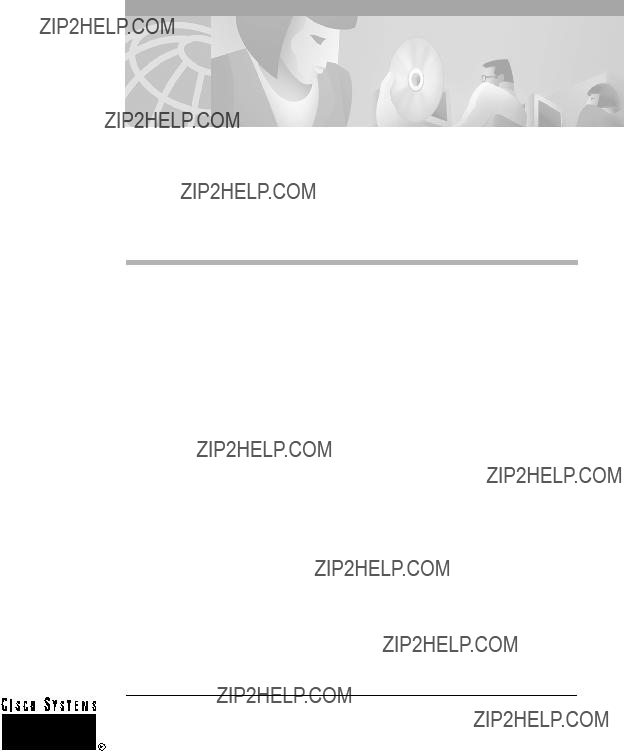
Release Notes for Cisco CallManager Release 3.0(10)
Original CCO appearance: June 20, 2001
Revised: July 2, 2001
These release notes describe the new features and caveats for Cisco CallManager Release 3.0(10).
For a list of the open and resolved caveats for Cisco CallManager Release 3.0(10), see ???Resolved Caveats??? section on page 20 and ???Open Caveats??? section on
page 64. These release notes are updated every maintenance and major release.
Use these release notes in conjunction with the Installing Cisco CallManager Release 3.0(10) document, located on Cisco Connection Online (CCO), and the Cisco Documentation CD-ROM. The Installing Cisco CallManager Release 3.0(10) document is also packaged with your CDs or convergence server.
Access the latest software upgrades and release notes for Cisco CallManager 3.0(10) on Cisco Connection Online (CCO) at
http://www.cisco.com/cgi-bin/tablebuild.pl/callmgr.
Corporate Headquarters:
Cisco Systems, Inc., 170 West Tasman Drive, San Jose, CA 95134-1706 USA
Copyright ?? 2001. Cisco Systems, Inc. All rights reserved.
Contents
Contents
These release notes discuss the following topics:
???Introduction, page 2
???System Requirements, page 3
???Related Documentation, page 3
???New and Changed Information, page 4
???Resolved Caveats, page 20
???Open Caveats, page 64
???Documentation Updates, page 82
???Obtaining Documentation, page 100
???Obtaining Technical Assistance, page 102
Introduction
Cisco CallManager, a network business communication system, provides high-quality telephony over IP networks. Cisco CallManager enables the conversion of conventional, proprietary, circuit-switched PBXs to multiservice, open LAN systems.
Release Notes for Cisco CallManager Release 3.0(10)
System Requirements
System Requirements
Make sure Cisco CallManager Release 3.0 is installed and configured on a Cisco Media Convergence Server. You may also install Cisco CallManager on a Cisco-approved Compaq server configuration or a Cisco-approved IBM server configuration.
Caution The installation will not complete if you do not follow the exact configuration.
Access the correct Cisco-approved server configuration for IBM server or
Compaq server at
http://www.cisco.com/go/swonly/
For other system hardware component information and system requirements, refer to Installing Cisco CallManager Release 3.0(10).
Determining the Software Version
To determine the software version of Cisco CallManager 3.0(10), open Cisco CallManager Administration; then click Details on the main Cisco CallManager Administration page. The following information displays:
???Cisco CallManager System version
???Cisco CallManager Administration version
???Database information and database DLL versions
Related Documentation
The following list shows related documents for Release 3.0(10) of
Cisco CallManager:
???Installing Cisco CallManager 3.0(10)
???Quick Start Guide for Cisco CallManager Release 3.0
???Cisco CallManager Administration Guide for Release 3.0(5)
???Troubleshooting Guide for Cisco CallManager Release 3.0(5)
Release Notes for Cisco CallManager Release 3.0(10)
New and Changed Information
???Cisco IP Phone 7900 Family Administration Guide
???Configuring Remote Serviceability for Cisco CallManager Release 3.0
???Using Cisco CallManager Trace Gathering Tool for Diagnostic Traces
???Cisco WebAttendant Quick Start Guide
???Cisco WebAttendant User Guide
???Cisco JTAPI Developer Guide
???Cisco TAPI Developer Guide
???Software License Agreement
New and Changed Information
New Software Features for Release 3.0(10)
Cisco CallManager Release 3.0(10) adds features and provides additional workarounds to open caveats and resolves caveats.
Refer to ???Resolved Caveats - Release 3.0(10)??? section on page 20 , ???Open Caveats??? section on page 64 , and the ???Important Notes for Release 3.0(10)??? section on page 5 for more information.
Customer Enterprise Directory Integration Component for Microsoft Active Directory and Netscape Directory Server
Cisco CallManager Release 3.0(10) supports the customer enterprise directory integration component for Microsoft Active Directory and Netscape Directory Server.
The enterprise directory integration component allows the customers' enterprise directories to maintain the association of devices to users. Using these directories, administrators can add users manually or link to them from an existing corporate Lightweight Directory Access Protocol (LDAP) directory.
To read installation instructions, refer to
http://www.cisco.com/cgi-bin/tablebuild.pl/callmgr.
Release Notes for Cisco CallManager Release 3.0(10)
New and Changed Information
Backup Utility
The Backup Utility now creates backup files with the .sti extension instead of using the .tar extension.
If you have .tar files already on your system, such as from an upgrade, the Backup Utility restores those files as well, but all current back ups are saved as a .sti extension.
Important Notes for Release 3.0(10)
Compatibility Matrix
Table 1 lists versions with which Cisco CallManager 3.0(10) has been tested.
Release Notes for Cisco CallManager Release 3.0(10)
New and Changed Information
Service Parameters
During an upgrade, Cisco CallManager does not overwrite service parameter values that the system administrator manually configures in Cisco CallManager Administration.
New Software Features in Release 3.0(9)
The following section contains new and changed software features in
Cisco CallManager Release 3.0(9).
User Interface Enhancement
A new configuration parameter check box exists on the Cisco CallManager Administration H.323 Gateway Configuration Web page. This allows a H.225D to "run on every node.??? If you select this option (by default it is on), theH.225D runs on every node.
When upgrading an existing system, your current configuration remains.
Note See CSCdt40606 in the Resolved Caveats - Release 3.0(9) section for more information.
Release Notes for Cisco CallManager Release 3.0(10)
New and Changed Information
Service Parameters
Cisco CallManager Release 3.0(9) supports new service parameters.
Refer to Table 9 on page 83 for a complete listing of all service parameters, which includes descriptions and default values, that were not included in Release 3.0(5) of Cisco CallManager Administration Guide.
New Software Features in Release 3.0(8)
The following sections contain new and changed software features in
Cisco CallManager Release 3.0(8).
Strong Encryption
Cisco CallManager Release 3.0(8) contains low encryption (56-bit or less) in all of its components.
Access the Download Cryptographic Software link from the main CCO download location at http://www.cisco.com/cgi-bin/tablebuild.pl/callmgr for applications that contain 128-bit encryption, such as, TNDconnect.exe (Bridged Telnet application) and DC directory .dll extensions.
Note Versions preceding Cisco CallManager Release 3.0(8) included TNDconnect.exe (Bridged Telnet application) and DC Directory .dll extensions. These files contain strong encryption (128-bit).
Global Call ID
The TAPI Service Provider (TSP) Version 3.0, which is packaged with
Cisco CallManager 3.0, supports Global Call ID.
Applications use the Global Call ID to identify a specific call as it traverses various resources in the Cisco CallManager. For example, a Call Center application uses Global Call ID to track a call that comes into a CTI route point, gets redirected to a CTI port, and terminates at an Agent IP phone.
Release Notes for Cisco CallManager Release 3.0(10)
New and Changed Information
New Software Features in Release 3.0(7)
Cisco CallManager Release 3.0(7), a maintenance release, adds no new features. Refer to the ???Resolved Caveats - Release 3.0(7)??? section on page 47 for more information.
Important Notes for Release 3.0(7)
Service Parameter Restart Conditions
If you modify any of the service parameters in the following list, you must restart the Cisco CallManager 3.0(7) before the modifications take effect.
???Digital Port
???Ethernet Phone Port
???Analog Port
???MGCP Listen Port
???MGCP Keep-alive Port
???MessageWaitingOffDN
???MessageWaitingOnDN
???StatisticsEnabled
???MaxDaResponseTimeoutErrorCount
???MaxTotalNumberOfRegisteredCallingEntities
Note The service parameter restart conditions apply to all versions up to an including Cisco CallManager 3.0(7).
Note Refer to Table 9 on page 83 for more information on service parameter definitions and defaults.
Release Notes for Cisco CallManager Release 3.0(10)
New and Changed Information
Cisco IP Phone 7910 and Cisco IP Phone 7940 Compatibility Issue
Cisco IP Phone 7910 and Cisco IP Phone 7940 are only supported by
Cisco CallManager Release 3.0(5a) and higher. If you are running an earlier version, you must upgrade to a later version at http://www.cisco.com/cgi-bin/tablebuild.pl/callmgr.
New Software Features in Release 3.0(6)
The following sections contain new and changed hardware and software features in Release 3.0(6) of Cisco CallManager.
Cisco WebAttendant
Cisco WebAttendant supports the traditional role of a manual attendant console. Associated with a Cisco IP Phone, the application allows the attendant to quickly accept and dispatch calls to enterprise users. An integrated directory service provides traditional busy lamp field (BLF) and direct station select (DSS) functions for any line in the system. The application is Web-enabled and, therefore, portable to Windows 98, NT, and 2000 platforms.
As one of its primary benefits over traditional attendant console systems, Cisco WebAttendant monitors the state of every line in the system to efficiently dispatch calls. The absence of a hardware-based line monitor device offers a much more affordable and distributable manual attendant solution than traditional consoles.
Note Each Cisco CallManager in a cluster can process as many as 2000
Cisco WebAttendant calls per hour.
Release Notes for Cisco CallManager Release 3.0(10)
New and Changed Information
Tech Prefixes
Cisco CallManager Release 3.0(6) supports tech prefixes in the Gatekeeper. To properly configure the Cisco CallManager to register with a tech prefix you must go to service parameters and perform the following steps:
Step 1 Choose Cisco CallManager.
Step 2 Choose Cisco CallManager from Configured Services.
Step 3 Enter GateKeeperSupportedPrefix in the Params section.
Step 4 Choose String as the type.
Step 5 Click update.
Step 6 Select GateKeeperSupportedPrefix from the Configured Service Parameters.
Step 7 Add the proper value; i.e., 1#, 2#, etc. Only one tech prefix is allowed.
Service Parameter
Cisco CallManager Release 3.0(6) supports a new service parameter.
MaxCTIConnections??? This parameter sets the maximum number of simultaneous active CTI connections between an application and the Cisco CallManager. The default value is 400 connections.
Note Refer to Table 9 on page 83 for more information on service parameter definitions and defaults.
Important Notes for Release 3.0(6)
Cisco IP Phone 7910 and Cisco IP Phone 7940 Compatibility Issue
Cisco IP Phone 7910 and Cisco IP Phone 7940 are only supported by
Cisco CallManager Release 3.0(5a) and higher. If you are running an earlier version, you must upgrade to a later version at http://www.cisco.com/cgi-bin/tablebuild.pl/callmgr.
New and Changed Information
New Hardware and Software Features in Release 3.0(5a)
The following sections contain new and changed hardware and software features in Release 3.0(5a) of Cisco CallManager.
Support for New Cisco IP Phones
These new phone models, Cisco IP Phone 7910, Cisco IP Phone 7910-SW+, and Cisco IP Phone 7940, broaden the product line of Cisco IP phones.
???Cisco IP Phone 7910???This is a single-line Cisco IP Phone with the following features:
???Two-line, 24-character display
???Four fixed function buttons (Line, Hold, Transfer, Settings)
???Six programmable buttons
???Hands-free dialing speaker
???Single 10 BaseT (RJ-45) connector
???Message waiting indicator
???Provision for either inline or local plug power
???Cisco IP Phone 7910-SW+???This is a single-line Cisco IP Phone with the following features:
???Two-line, 24-character display
???Four fixed function buttons (Line, Hold, Transfer, Settings)
???Six programmable buttons
???Hands-free dialing speaker
???Dual 10/100 BaseT (RJ-45) connectors into dual port 10/100 BaseT switch
???Message waiting indicator
???Provision for either inline or local plug power
New and Changed Information
???Cisco IP Phone 7940???This is a two-line Cisco IP Phone with the following features:
???Line buttons assignable as either lines or speed dials
???Pixel-based display
???Four soft keys with context-sensitive features
???Five fixed function buttons (Messages, Services, Information, Directory, Settings)
???Full-duplex speakerphone
???Message waiting indicator
???Dual 10/100 BaseT (RJ-45) connectors into dual port 10/100 BaseT switch
???Provision for either inline or local plug power
TAPI 2.1 and JTAPI 1.2 Service Providers
The Microsoft Telephony Application Programming Interface (TAPI) and Java Telephony API (JTAPI) service providers enable development of sophisticated, converged multimedia applications. These APIs support the following Cisco applications in this release:
???Cisco IP SoftPhone
???Cisco IP Contact Center
???Cisco IP Interactive Voice Response System
???Cisco IP Auto Attendant
???E-Services Application Engine
In addition, third-party software vendors may develop applications using these APIs. This release does not support Service Providers Interface redundancy.
Multicluster Scalability and ITU-T H.323 Enhancements
Cisco CallManager Release 3.0(5a) adds the following scalability and ITU-T H.323 enhancements for multicluster environment in which call admission control is provided by Cisco???s H.323 gatekeeper, the Cisco Multimedia Conference Manager (MCM):
New and Changed Information
???Simpler configuration???Previous versions of Cisco CallManager required all Cisco CallManagers in separate clusters to be configured in the Cisco MCM as a source address/destination address (SA/DA) pair. Registration by cluster pairs meant that for a ten-site system, 90 (9 x 10) separate entries would be required in the Cisco MCM configuration. Also, because the SA/DA name required a hexadecimal address, configuration at the Cisco MCM and in the Cisco CallManager database was error prone. Cisco CallManager Release 3.0(5a) allows individual gatekeeper-controlled Cisco CallManagers to be configured at the Cisco MCM and allows a Cisco CallManager host name or dotted decimal IP address to be used instead of a hexadecimal address.
???More efficient Cisco CallManager to H.323 Gatekeeper registration???Cisco CallManager can register to the Cisco MCM using full RRQ upon Cisco CallManager initialization. Subsequent RRQs are periodically sent to the gatekeeper as a keep-alive function. In
Cisco CallManager Release 3.0(5a) the lightweight RRQ format of H.225 RAS specification is used to reduce periodic-processing burden on the Cisco MCM CPU.
???Admission Request (ARQ) enhancements???When an intercluster call is initiated, the gatekeeper-controlled Cisco CallManager in a cluster issues the E.164 address of the destination in its ARQ to the MCM. Also, the gatekeeper-controlled Cisco CallManager in the source cluster accepts the IP address of the destination device in the resulting Admission Confirm (ACF) message.
???Gatekeeper-controlled Cisco CallManagers, during the initial RRQ, send a full E.164 address range Cisco MCM???Cisco MCM will accept the registration now that it is aware of the full E.164 address range of the cluster associated with that gatekeeper-controlled Cisco CallManager. Future enhancements to the Cisco MCM software will include the ability for Cisco MCM to automatically add the address ranges to the Cisco MCM dial plan.
Cisco IP Phone Services on Cisco Pixel-Based Display Phones
Cisco IP Phone 7940 and Cisco IP Phone 7960 have an HTTP client with an XML parser. When a user presses the Services fixed-function button, the HTTP client will attach to a preconfigured (by the administrator) URL. This URL will display a menu of available HTML/XML services for the user. These services are normally located on an HTTP server separate from the Cisco CallManager or
New and Changed Information
applications server. When the user selects one of the services, the service emits XML tags to the same phone according to the design behavior of the service. XML tags for menu display, item selection, graphics display, and character display are available. Customers may create HTML/XML services that are accessible to pixel-based Cisco IP Phone displays.
Note The eXtensible Markup Language (XML) Application Programming Interface (API) is available for end-user application development. The description of this API is documented in Cisco IP Phone Services Application Development Note, which is available for download from CCO at http://www.cisco.com/univercd/cc/td/doc/product/voice/sw_ap_to/ under the category ???Third-Party Application Development Guides.???
Assistance to resolve bugs in the API is available through TAC. Assistance for application development is not available through TAC. Applications development assistance will be made available in the near-term through a specifically tasked help desk. Until that help desk is available, application development support is not available for the XML API.
Corporate Directory Dialing from Cisco IP Phones
The Cisco IP Phone 7940 and Cisco IP Phone 7960 display a menu of directories when a user presses directories. When the user selects Corporate Directory from the menu, the phone presents the option of specifying characters to find the destination user???s first name, last name, or directory number. The user may enter any number of characters in any of these fields, then press Search. An HTTP request goes to an HTML service, which queries the embedded
Cisco CallManager directory. The HTML service then delivers, through XML tags, the complete listing of matched user entries to the phone???s display. The user may then scroll to select the destination entry and press Dial to initiate the dial sequence to that destination.
New and Changed Information
Additional MGCP Support for Cisco VoIP Gateways
Media Gateway Configuration Protocol (MGCP) support provides two primary benefits over H.323 support. First, MGCP provides a centralized dial plan. An H.323 network requires that the dial plan for each gateway be statically configured. Every dial plan change requires updating the dial plan in every gateway. MGCP provides centralized dial plan configuration support at the Cisco CallManager.
Cisco CallManager Release 3.0(5a) adds MGCP support for the following
Cisco VoIP gateways:
???Cisco 2600 Series gateways with FXS and FXO analog interfaces
???Cisco 3600 Series gateways (362X, 364X, 366X) with FXS and FXO analog interfaces
Note At Cisco CallManager Release 3.0(5a), MGCP code support in the 36XX router/gateways was not complete. Once complete and tested, these gateways will be supported in an AVVID network.
Cisco VG200 FXO Hookflash Support
The added Cisco VG200 FXO hookflash support Symbol NetVision Phones, which are configured as H.323 client devices. The Cisco VG200 can be configured to provide hookflash feature support from H.323 NetVision phones through Cisco VG200 FXO ports attached to PBXs. The NetVision Phones issue H.245 messages through the Cisco CallManager to Cisco VG200 FXO gateways on initiation by the user of PBX functions. The Cisco VG200 gateway interprets the signals and translates them to an FXO hookflash followed by a PBX-specific feature code.
AMIS-A Support
Signaling within the Skinny Gateway Control Protocol client and Skinny Gateway stacks in Cisco CallManager has been extended to properly interpret and pass out-of-band equivalent signals for ???A,??? ???B,??? ???C,??? and ???D??? DTMF signals. These additional signals can be passed from AMIS-A compliant messaging system
New and Changed Information
through the Cisco AVVID network, out of TDM networks to another AMIS-equivalent voice messaging system. The capabilities allowed include the ability to reply to and forward messages from one messaging system to another.
User Interface Enhancements
Cisco CallManager Release 3.0(5a) makes the following enhancements to the Cisco CallManager Administration configuration pages:
???Cisco IP Phone Services Configuration???This new page enables administrators to add, modify, or delete Cisco IP Phone services to which users can subscribe to at their site. To access this page from the main Cisco CallManager Administration page, select Feature > Cisco IP Phone Services.
???Cisco uOne Port Wizard???The Cisco uOne Port Wizard enables administrators to quickly configure ports associated with a Cisco uOne messaging server to the Cisco CallManager database. To access the wizard from the main Cisco CallManager Administration page, select Device > Cisco uOne Port; then, click the Cisco uOne Port Wizard link.
???CTI Route Point Configuration???This new page enables administrators to add, modify, and delete CTI route points. A CTI route point is a virtual device that can receive multiple, simultaneous calls for the purpose of application-controlled redirection. Applications that use CTI route points include the Cisco IP Interactive Voice Response System. To access this page from the main Cisco CallManager Administration page, select Device > CTI Route Point.
???CTI Port Configuration???This new page enables administrators to add, modify, and delete a CTI port configuration. CTI ports are virtual devices that are used by software-based Cisco CallManager applications such as Cisco SoftPhone, Cisco AutoAttendant, and Cisco IP Interactive Voice Response (IVR). To access this page from the main Cisco CallManager Administration page, select Device > Phones; then, select CTI Ports.
???Gatekeeper Configuration???You can now access gatekeeper configuration as a separate configuration page where administrators can configure one gatekeeper, or Cisco MCM, per Cisco CallManager cluster. A gatekeeper device supports the H.225 RAS message set used for call admission control, bandwidth allocation, and dial pattern resolution. To access this page from the main Cisco CallManager Administration page, select Device >
Gatekeeper.
New and Changed Information
???Cisco WebAttendant Configuration???A new set of added pages enables administrators to configure Cisco WebAttendant pilot points, hunt groups, and users. To access this page from the main Cisco CallManager Administration page, select Service > Cisco WebAttendant.
???Gateway Configuration???The modified Cisco CallManager Administration interface includes support for additional MGCP gateways, such as Cisco 2600 Series gateways with FXS and FXO analog interfaces. The MGCP gateway configuration no longer appears as a separate menu item under Device. To access gateway configuration pages from the main Cisco CallManager Administration pages, select Device > Add a New Device; then, select Gateway from the drop-down listbox menu.
Important Notes for Release 3.0(5a)
Computer Telephony Integration
Computer Telephony Integration serves as the base interface to
Cisco CallManager for TAPI and JTAPI applications as well as direct CTI applications such as Cisco WebAttendant. Cisco CallManager 3.0(5a) allows you to control CTI application usage on a per-user basis. You can enable CTI application use for a particular user by browsing to entry in the User->Global Directory in the Cisco CallManager Administration Console and selecting the ???Enable CTI Application Use??? checkbox.
Note By default, CTI application use is disabled for all users.
In addition, Cisco CallManager 3.0(5a) also enforces a limit of 400 concurrent CTI connections per Cisco CallManager server. Each CTI application opens a single CTI connection to the Cisco CallManager on successful initialization.
Alive CTI connection is required for the application to function.
Note A CTI connection is simply a TCP connection between the CTI application and the Cisco CallManager server and is distinct from a CTI port that is a virtual device.
New and Changed Information
The following example highlights the difference:
The Cisco IP Interactive Voice Response System typically opens several CTI route points and CTI ports; it will always open a single CTI connection to a Cisco CallManager in the cluster. The 400 connection limit applies to the CTI connection and not the CTI ports or route points.
BAT Reinstallation
Administrators must reinstall BAT after installing Cisco CallManager 3.0(5a) because of a change made to the database.
IOS Version
The Cisco CallManager Release 3.0(5a) was tested with IOS 12.1(3x)XI2.
Intercluster Trunk Configuration
An intercluster trunk, a virtual h.323 gateway, interlinks Cisco CallManagers in different clusters. Beginning with Cisco CallManager Release 3.0(4), intercluster trunks were configured differently. To ensure redundancy and proper failover operation, each cluster must configure an intercluster trunk to each
Cisco CallManager in the remote cluster with which it shares a link.
For example, assume that you are configuring intercluster trunks among three Cisco CallManager clusters: Cluster-1, Cluster-2, and Cluster-3C:
???Cluster-1 has three Cisco CallManagers: CCM-A, CCM-B, and CCM-C.
???Cluster-2 has two Cisco CallManagers: CCM-D and CCM-E.
???Cluster-3 has two Cisco CallManagers: CCM-F and CCM-G.
In the preceding scenario, you must configure 14 intercluster trunks to ensure redundancy:
???Cluster-1 configures 4 intercluster trunks (to CCM-D and CCM-E in Cluster-2 and CCM-F and CCM-G in Cluster-3).
New and Changed Information
???Cluster-2 configures 5 intercluster trunks (to CCM-A, CCM-B, and CCM-C in Cluster1 and to CCM-F and CCM-G in Cluster-3).
???Cluster-3 configures 5 intercluster trunks (to CCM-A, CCM-B, and CCM-C in Cluster-1 and to CCM-D and CCM-E in Cluster-2).
Note If you add another cluster to this example configuration and you still want to maintain the intercluster links, you must modify the configuration for each cluster to add the necessary links between the cluster to all of the Cisco CallManagers in the new cluster. You must also configure the new cluster with intercluster trunks to all of the Cisco CallManagers in the existing clusters.
Cisco CallManager Integration with Corporate LDAP Directories
Cisco CallManager integration with corporate LDAP directories, such as Microsoft Active Directory and Netscape Directory Services, is not available in Cisco CallManager Release 3.0(5a). The availability of this feature will be announced at a later date, pending completion of integration testing
Cisco IP Phone 7910 and Cisco IP Phone 7940 Compatibility Issue
Cisco IP Phone 7910 and Cisco IP Phone 7940 are only supported by
Cisco CallManager Release 3.0(5a) and higher. If you are running an earlier version, you must upgrade to a later version at http://www.cisco.com/cgi-bin/tablebuild.pl/callmgr.
Resolved Caveats
Resolved Caveats
Resolved Caveats - Release 3.0(10)
Table 2 lists and describes Caveats that were resolved in Cisco CallManager
Release 3.0(10).
Note If you have an account with Cisco.com (Cisco Connection Online), you can use the Bug Toolkit to find caveats of any severity for any release.
To access the Bug Toolkit, log on to http://www.cisco.com/support/bugtools.
Resolved Caveats
Resolved Caveats - Release 3.0(7)
Table 5 lists and describes Caveats that were resolved in Cisco CallManager
Release 3.0(7)
Note If you have an account with Cisco.com (Cisco Connection Online), you can use the Bug Toolkit to find caveats of any severity for any release.
To access the Bug Toolkit, log on to http://www.cisco.com/support/bugtools.
.
Table 5 Cisco CallManager Release 3.0(7) Resolved Caveats
Resolved Caveats
Resolved Caveats - Release 3.0(6)
Table 6 lists and describes Caveats that were resolved in Cisco CallManager
Release 3.0(6)
Note If you have an account with Cisco.com (Cisco Connection Online), you can use the Bug Toolkit to find caveats of any severity for any release.
To access the Bug Toolkit, log on to http://www.cisco.com/support/bugtools.
.
Table 6 Cisco CallManager Release 3.0(6) Resolved Caveats
Open Caveats
Open Caveats
Open Caveats for Cisco CallManager Release 3.0(10)
Table 8 describes possible unexpected behaviors by Cisco CallManager Release 3.0(10). Unless otherwise noted, these caveats apply to all Cisco CallManager 3.0 releases up to and including Cisco CallManager Release 3.0(10)
Note If you have an account with Cisco.com (Cisco Connection Online), you can use the Bug Toolkit to find caveats of any severity for any release.
To access the Bug Toolkit, log on to http://www.cisco.com/support/bugtools.
Open Caveats
???When a time, region, or any static item is deleted, no MIB tables reflects the change.
???When groups and regions are added, no MIB tables reflects the change.
Workaround: Restart the SNMP data collector or Cisco CallManager to display updated values in the MIB tables. If a Cisco CallManager cluster is involved, you must restart all SNMP data collectors to show consistent values in the MIB tables throughout the cluster.
Examples (local):
To remedy the two exceptions to local MIB table updating
???When deleting a time, region, or any static item, restart the SNMP data collector for the local Cisco CallManager installation to see the update reflected in the MIB table.
???When adding groups and regions to a Cisco CallManager cluster, restart the SNMP data collector, which will help to update the MIB table.
In Cisco CallManager clusters, changes to global values in a cluster environment will not be reflected in all the MIB tables. You must restart all SNMP data collectors to show consistent values in the MIB tables throughout the cluster.
Examples (cluster):
???When adding or deleting multiline extensions of an existing telephone, you must restart the Cisco CallManager system associated with that particular phone to activate the change in the MIB table for phone extensions.
???When changing the primary Cisco CallManager name and description, you must restart Cisco CallManager to see the changes in the Primary MIB table. If the update involves a Cisco CallManager cluster, you must restart all
Cisco CallManagers in the cluster to see the changes reflected in all the tables.
Open Caveats
???HoldType ??? Determines whether the hold light flashes more rapidly for the user who placed a call on hold when two different phones share the same directory number. Default is still F.
???ToneOnHoldTime ??? Determines the interval between tones when a call is on hold. Default is 10 seconds, and the value range is 3 to 99999.
Workaround: Use the preceding definitions instead of the definitions in the
Cisco CallManager Administration Guide and online help.
CSCdr97481 Line button does not answer call on Cisco IP Phone model 30 VIP/12 SP+ with call pickup.
Workaround: Use the hookflash to retrieve the call.
Documentation Updates
Documentation Updates
This section contains the latest documentation updates for Release 3.0 of the Cisco CallManager, and the latest service parameters that were not included in Release 3.0(5) of the Cisco CallManager documentation. Included in these updates are any changes or late-breaking information that occurred after production of the Release 3.0 Cisco CallManager Administration Guide, Configuring Remote Serviceability for Cisco CallManager Release 3.0, and/or the online help for the Cisco CallManager application, as well as any information that was omitted from the Release 3.0 documents.
Documentation Updates
New Service Parameters
Table 9 contains new Cisco CallManager service parameters, with descriptions, that were not included in the Release 3.0(5) Cisco CallManager Administration Guide or the online help for the Cisco CallManager application.
Table 9 Cisco CallManager Service Parameter Updates
Documentation Updates
Service Parameters
Table 10 contains new Cisco CallManager service parameters, with descriptions, that were not included in the Release 3.0 Cisco CallManager Administration Guide or the online help for the Cisco CallManager application.
Caution Do not modify any defaults or settings of the following parameters without the assistance of the Cisco Technical Assistance Center (TAC).
Table 10 Cisco CallManager Service Parameters Not Included in Release 3.0 Documentation
Table 11 contains new Cisco Messaging Interface (CMI) service parameter definitions that were not included in the Release 3.0 Cisco CallManager Administration Guide or the online help for the Cisco CallManager application.
Caution Do not modify any defaults or settings of the following parameters without the assistance of the Cisco Technical Assistance Center (TAC).
Server Name Change
Change the CiscoWorks2000 server name by editing the SAenvproperties.ini file manually, then restarting the Cisco Syslog Collector service. In future releases, an administrative interface will be available for this purpose.
Documentation Updates
Running Show Tech
To run show tech correctly, use this example to construct your command:
show -f output.txt -v -w480 db
The example given in the Show Command chapter of Configuring Remote Serviceability for Cisco CallManager 3.0 (page 3-2) lacks a space before ???db.???
Changes
This section contains changes that have occurred since the original release of the
Cisco CallManager Administration Guide Release 3.0. These changes do not currently appear in the Release 3.0 Cisco CallManager Administration Guide or the online help for the Cisco CallManager application.
Default Value Changed for SdlTraceTotalNumFiles Service Parameter
SdlTraceTotalNumFiles is a service parameter for the Cisco CallManager service type. The default has been changed to 250. This is the correct default for this service parameter.
Omissions
This section contains lists of service parameters for the Cisco CallManager that were not included in the initial production of the Release 3.0 Cisco CallManager Administration Guide and online help for the Cisco CallManager application. A later release of the document will define these parameters.
Caution Do not modify any of the defaults or settings of the following parameters without the assistance of the Cisco Technical Assistance Center (TAC).
Documentation Updates
Cisco CallManager Service Parameters
The following list contains the service parameters, which can be configured for the Cisco CallManager service type, that were omitted from the Release 3.0
Cisco CallManager Administration Guide and online help for the Cisco CallManager application:
???AlwaysUsePrimeLine
???CallAcceptTimer
???CallerId
???CgpnScreeningIndicator
???CtiApplicationHeartBeatTime
???DeviceStatusPollInterval_msec
???DialPlanPath
???EnableSNMP
???EnableStatistics
???FlashHookDuration_msec
???GatekeeperRefresh
???H225BlockSetupDestination
???MaxDaResponseTimeoutErrorCount
???MaxNumberOf723Calls
???MGCPConnectTime
???MGCPRespTimeout
???MGCPTimeout
???RASInboundLRQFlag
???RASOutboundLRQFlag
???SdlListeningPort
???SdlTraceDataFlags
???SdlTraceDataSize
???SdlTraceFilePath
???SdlTraceFlag
Documentation Updates
???SdlTraceTypeFlags
???SendingCompleteIndicator
???ToneOnCallForward
???TypeOfCalledNumberForH225Devices
???VoiceMail
Cisco TFTP Service Parameters
The following list contains the service parameters, which can be configured for the Cisco TFTP service type, that were omitted from the Release 3.0
Cisco CallManager Administration Guide and online help for the Cisco CallManager application:
???AlternateFileLocation1
???AlternateFileLocation2
???AlternateFileLocation3
???AlternateFileLocation4
???AlternateFileLocation5
???AlternateFileLocation6
???AlternateFileLocation7
???AlternateFileLocation8
???AlternateFileLocation9
???AlternateFileLocation10
Cisco Messaging Interface Service Parameters
The following list contains the service parameters, which can be configured for the Cisco Messaging Interface (CMI) service type, that were omitted from the Release 3.0 Cisco CallManager Administration Guide and online help for the Cisco CallManager application.
???BackupCallManagerName
???BaudRate
???CallManagerName
Documentation Updates
???DataBits
???DialingPlan
???InputDnSignificantDigits
???KeepAliveDn
???OutputDnFormat
???OutputExternalFormat
???Parity
???RouteFilter
???SsapKeepAliveInterval
???StopBits
???ValidateDns
???VoiceMailParition
Cisco IP Voice Media Streaming Service Parameters
The following list contains the service parameters, which can be configured for the Cisco IP Voice Media Streaming service type, that were omitted from the Release 3.0 Cisco CallManager Administration Guide and online help for the Cisco CallManager application:
???CFB:CallCount
???CFB:RunFlag
???MTP:CallCount
Cisco Enterprise Service Parameters
The following list contains the service parameters, which can be configured for the Cisco Enterprise service type, that were omitted from the Release 3.0
Cisco CallManager Administration Guide and Online Help:
???DBL:DatabaseVersion
???MessageWaitingDirn
Obtaining Documentation
Errors
This section contains any errors contained in the Cisco CallManager Administration Guide for Release 3.0 and/or the online help for the
Cisco CallManager application. The upcoming release of the document and online help application will correct these errors.
Incorrect Name of MwiSearchSpace Service Parameter
The name of the Cisco Messaging Interface (CMI) service parameter appears incorrectly in the documentation and online help application. The parameter name should be MwiSearchSpace. The documentation is also missing a description of the value to be entered. The value to enter for MwiSearchSpace is a colon-separated list of partition names. For example, dallas01:dallas02:dallas03, where dallas01, dallas02, and dallas03 are names of partitions.
Incorrect Definition for HoldType and ToneOnHoldTime
The definitions for the Cisco CallManager HoldType and ToneOnHoldTime service parameters are incorrect in the Cisco CallManager Administration Guide and online help for Cisco CallManager Release 3.0. The correct definitions are as follows:
???HoldType ??? Determines whether the hold light flashes more rapidly for the user who placed a call on hold in the case where two different phones share the same directory number. The default value is still F.
???ToneOnHoldTime ??? Determines the time interval between tones when a call is on hold. The default is 10 seconds, and the value range is 3 to 99999.
Obtaining Documentation
The following sections provide sources for obtaining documentation from Cisco Systems.
Obtaining Documentation
World Wide Web
You can access the most current Cisco documentation on the World Wide Web at the following sites:
???http://www.cisco.com
???http://www-china.cisco.com
???http://www-europe.cisco.com
Documentation CD-ROM
Cisco documentation and additional literature are available in a CD-ROM package, which ships with your product. The Documentation CD-ROM is updated monthly and may be more current than printed documentation. The CD-ROM package is available as a single unit or as an annual subscription.
Ordering Documentation
Cisco documentation is available in the following ways:
???Registered Cisco Direct Customers can order Cisco Product documentation from the Networking Products MarketPlace:
http://www.cisco.com/cgi-bin/order/order_root.pl
???Registered Cisco.com users can order the Documentation CD-ROM through the online Subscription Store:
http://www.cisco.com/go/subscription
???Nonregistered Cisco.com users can order documentation through a local account representative by calling Cisco corporate headquarters (California, USA) at 408 526-7208 or, in North America, by calling 800 553-NETS(6387).
Obtaining Technical Assistance
Documentation Feedback
If you are reading Cisco product documentation on the World Wide Web, you can submit technical comments electronically. Click Feedback in the toolbar and select Documentation. After you complete the form, click Submit to send it to Cisco.
You can e-mail your comments to bug-doc@cisco.com.
To submit your comments by mail, use the response card behind the front cover of your document, or write to the following address:
Attn Document Resource Connection
Cisco Systems, Inc.
170 West Tasman Drive
San Jose, CA 95134-9883
We appreciate your comments.
Obtaining Technical Assistance
Cisco provides Cisco.com as a starting point for all technical assistance. Customers and partners can obtain documentation, troubleshooting tips, and sample configurations from online tools. For Cisco.com registered users, additional troubleshooting tools are available from the TAC website.
Cisco.com
Cisco.com is the foundation of a suite of interactive, networked services that provides immediate, open access to Cisco information and resources at anytime, from anywhere in the world. This highly integrated Internet application is a powerful, easy-to-use tool for doing business with Cisco.
Cisco.com provides a broad range of features and services to help customers and partners streamline business processes and improve productivity. Through Cisco.com, you can find information about Cisco and our networking solutions, services, and programs. In addition, you can resolve technical issues with online technical support, download and test software packages, and order Cisco learning materials and merchandise. Valuable online skill assessment, training, and certification programs are also available.
Obtaining Technical Assistance
Customers and partners can self-register on Cisco.com to obtain additional personalized information and services. Registered users can order products, check on the status of an order, access technical support, and view benefits specific to their relationships with Cisco.
To access Cisco.com, go to the following website:
http://www.cisco.com
Technical Assistance Center
The Cisco TAC website is available to all customers who need technical assistance with a Cisco product or technology that is under warranty or covered by a maintenance contract.
Contacting TAC by Using the Cisco TAC Website
If you have a priority level 3 (P3) or priority level 4 (P4) problem, contact TAC by going to the TAC website:
http://www.cisco.com/tac
P3 and P4 level problems are defined as follows:
???P3???Your network performance is degraded. Network functionality is noticeably impaired, but most business operations continue.
???P4???You need information or assistance on Cisco product capabilities, product installation, or basic product configuration.
In each of the above cases, use the Cisco TAC website to quickly find answers to your questions.
To register for Cisco.com, go to the following website:
http://www.cisco.com/register/
If you cannot resolve your technical issue by using the TAC online resources, Cisco.com registered users can open a case online by using the TAC Case Open tool at the following website:
http://www.cisco.com/tac/caseopen
Obtaining Technical Assistance
Contacting TAC by Telephone
If you have a priority level 1 (P1) or priority level 2 (P2) problem, contact TAC by telephone and immediately open a case. To obtain a directory of toll-free numbers for your country, go to the following website:
http://www.cisco.com/warp/public/687/Directory/DirTAC.shtml
P1 and P2 level problems are defined as follows:
???P1???Your production network is down, causing a critical impact to business operations if service is not restored quickly. No workaround is available.
???P2???Your production network is severely degraded, affecting significant aspects of your business operations. No workaround is available.
Use this documenin conjunction with the documents listed in the ???Related Documentation??? section on page 3 .
AccessPath, AtmDirector, Browse with Me, CCIP, CCSI, CD-PAC, CiscoLink, the Cisco Powered Network logo, Cisco Systems Networking Academy, the Cisco Systems Networking Academy logo, Fast Step, Follow Me Browsing, FormShare, FrameShare, GigaStack, IGX, Internet Quotient, IP/VC, iQ Breakthrough, iQ Expertise, iQ FastTrack, the iQ Logo, iQ Net Readiness Scorecard, MGX, the Networkers logo, Packet, RateMUX, ScriptBuilder, ScriptShare, SlideCast, SMARTnet, TransPath, Unity, Voice LAN, Wavelength Router, and WebViewer are trademarks of Cisco Systems, Inc.; Changing the Way We Work, Live, Play, and Learn, Discover All That???s Possible, and Empowering the Internet Generation, are service marks of Cisco Systems, Inc.; and Aironet, ASIST, BPX, Catalyst, CCDA, CCDP, CCIE, CCNA, CCNP, Cisco, the Cisco Certified Internetwork Expert logo, Cisco IOS, the Cisco IOS logo, Cisco Systems, Cisco Systems Capital, the Cisco Systems logo, Enterprise/Solver, EtherChannel, EtherSwitch, FastHub, FastSwitch, IOS, IP/TV, LightStream, MICA, Network Registrar, PIX, Post-Routing, Pre-Routing, Registrar, StrataView Plus, Stratm, SwitchProbe, TeleRouter, and VCO are registered trademarks of Cisco Systems, Inc. and/or its affiliates in the U.S. and certain other countries.
All other trademarks mentioned in this document or Web site are the property of their respective owners. The use of the word partner does not imply a partnership relationship between Cisco and any other company. (0106R)
Copyright ?? 2001, Cisco Systems, Inc.
All rights reserved.

